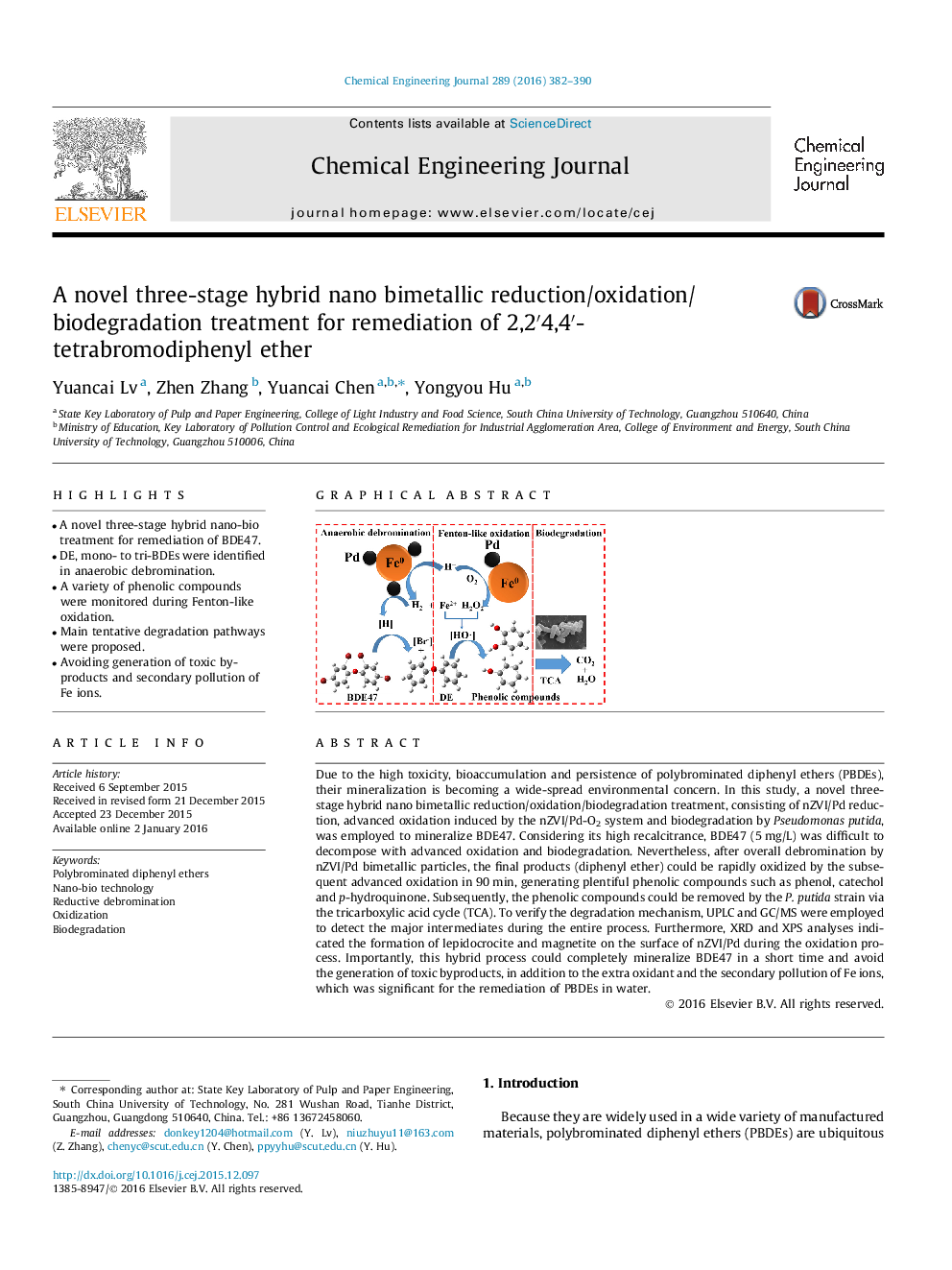| کد مقاله | کد نشریه | سال انتشار | مقاله انگلیسی | نسخه تمام متن |
|---|---|---|---|---|
| 145845 | 456352 | 2016 | 9 صفحه PDF | دانلود رایگان |

• A novel three-stage hybrid nano-bio treatment for remediation of BDE47.
• DE, mono- to tri-BDEs were identified in anaerobic debromination.
• A variety of phenolic compounds were monitored during Fenton-like oxidation.
• Main tentative degradation pathways were proposed.
• Avoiding generation of toxic by-products and secondary pollution of Fe ions.
Due to the high toxicity, bioaccumulation and persistence of polybrominated diphenyl ethers (PBDEs), their mineralization is becoming a wide-spread environmental concern. In this study, a novel three-stage hybrid nano bimetallic reduction/oxidation/biodegradation treatment, consisting of nZVI/Pd reduction, advanced oxidation induced by the nZVI/Pd-O2 system and biodegradation by Pseudomonas putida, was employed to mineralize BDE47. Considering its high recalcitrance, BDE47 (5 mg/L) was difficult to decompose with advanced oxidation and biodegradation. Nevertheless, after overall debromination by nZVI/Pd bimetallic particles, the final products (diphenyl ether) could be rapidly oxidized by the subsequent advanced oxidation in 90 min, generating plentiful phenolic compounds such as phenol, catechol and p-hydroquinone. Subsequently, the phenolic compounds could be removed by the P. putida strain via the tricarboxylic acid cycle (TCA). To verify the degradation mechanism, UPLC and GC/MS were employed to detect the major intermediates during the entire process. Furthermore, XRD and XPS analyses indicated the formation of lepidocrocite and magnetite on the surface of nZVI/Pd during the oxidation process. Importantly, this hybrid process could completely mineralize BDE47 in a short time and avoid the generation of toxic byproducts, in addition to the extra oxidant and the secondary pollution of Fe ions, which was significant for the remediation of PBDEs in water.
Figure optionsDownload as PowerPoint slide
Journal: Chemical Engineering Journal - Volume 289, 1 April 2016, Pages 382–390